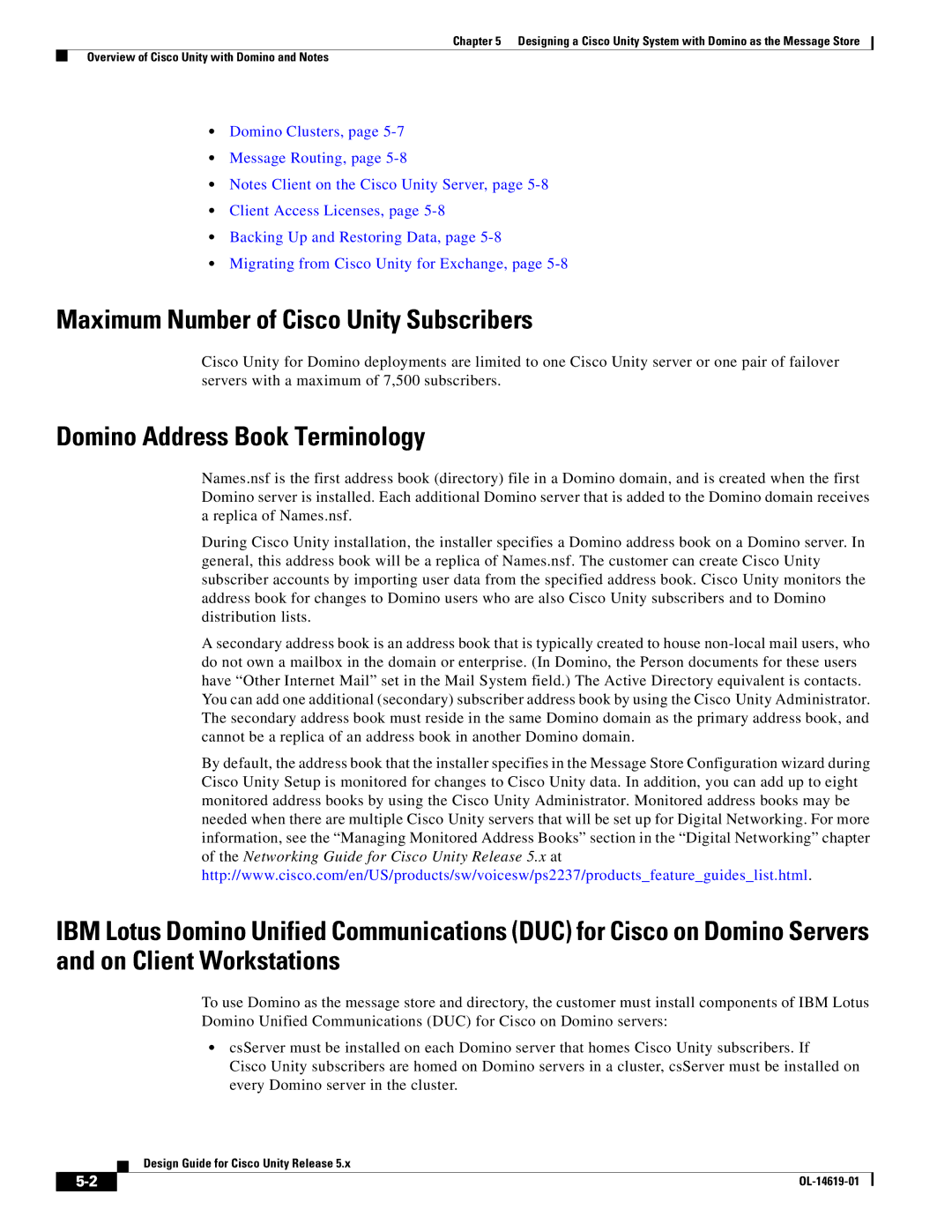
Chapter 5 Designing a Cisco Unity System with Domino as the Message Store
Overview of Cisco Unity with Domino and Notes
•Domino Clusters, page
•Message Routing, page
•Notes Client on the Cisco Unity Server, page
•Client Access Licenses, page
•Backing Up and Restoring Data, page
•Migrating from Cisco Unity for Exchange, page
Maximum Number of Cisco Unity Subscribers
Cisco Unity for Domino deployments are limited to one Cisco Unity server or one pair of failover servers with a maximum of 7,500 subscribers.
Domino Address Book Terminology
Names.nsf is the first address book (directory) file in a Domino domain, and is created when the first Domino server is installed. Each additional Domino server that is added to the Domino domain receives a replica of Names.nsf.
During Cisco Unity installation, the installer specifies a Domino address book on a Domino server. In general, this address book will be a replica of Names.nsf. The customer can create Cisco Unity subscriber accounts by importing user data from the specified address book. Cisco Unity monitors the address book for changes to Domino users who are also Cisco Unity subscribers and to Domino distribution lists.
A secondary address book is an address book that is typically created to house
By default, the address book that the installer specifies in the Message Store Configuration wizard during Cisco Unity Setup is monitored for changes to Cisco Unity data. In addition, you can add up to eight monitored address books by using the Cisco Unity Administrator. Monitored address books may be needed when there are multiple Cisco Unity servers that will be set up for Digital Networking. For more information, see the “Managing Monitored Address Books” section in the “Digital Networking” chapter of the Networking Guide for Cisco Unity Release 5.x at http://www.cisco.com/en/US/products/sw/voicesw/ps2237/products_feature_guides_list.html.
IBM Lotus Domino Unified Communications (DUC) for Cisco on Domino Servers and on Client Workstations
To use Domino as the message store and directory, the customer must install components of IBM Lotus Domino Unified Communications (DUC) for Cisco on Domino servers:
•csServer must be installed on each Domino server that homes Cisco Unity subscribers. If
Cisco Unity subscribers are homed on Domino servers in a cluster, csServer must be installed on every Domino server in the cluster.
Design Guide for Cisco Unity Release 5.x
| ||
|
